
I have been wanting to do this for quite some time now: create a little how-to series on different presser feet. Let's get started!
Tonight I will be discussing different types of feet that can be beneficial to the quilting process.

This foot comes with your machine and is a very general presser foot. It can stitch zigzag lines, straight lines, and also a number of decorative stitches.
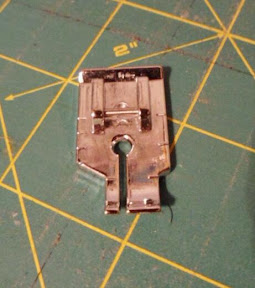
This particular foot has dual purposes: it can sew a quarter inch seam and an eighth of an inch seam. Impressive, huh?
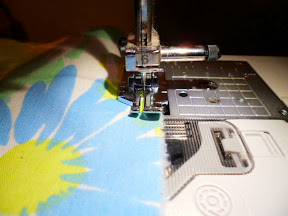

By lining your fabric up to the right edge of the foot, you will create a 1/4 inch seam. It's perfect for piecing fabrics or if you just like to sew with smaller seams as I do.

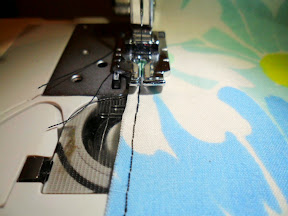
By lining your fabric up to the left side of the foot, you will create 1/8 inch seam. This is great for topstitching, edgstitching, and stitch-in-the-ditch quilting.
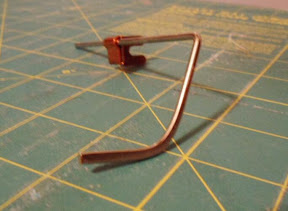
This is also know as a quilter. It is not a presser foot, per se, but an aid to your presser feet. It is simple an angled bar that you place in the master bracket (ankle that holds that you lock your feet into) and can adjust by sliding left and right.
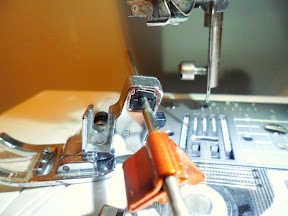
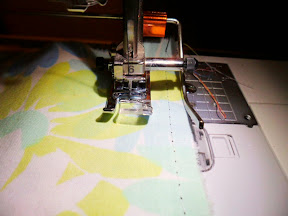
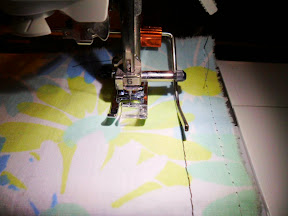
Simply line up the quilter to one of the inch/centimeter markings that you would like to use, place the edge of the fabric to this line, and sew. To sew the next line, place the previously stitched line to the quilter and stitch. Easy peasy!

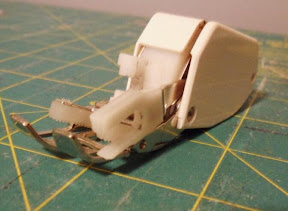
Also known as even-feed foot. It evenly feeds the top layer and the bottom layer of fabric at the same time, resulting in evenly sewn layers. This feat makes it great for quilting quilt tops with batting and sewing tricky fabrics vinyl, oilcloth, and leather.


The quilter can also be used with the walking foot. I used a thin piece of batting and quilted this sample piece and nothing shifted while sewing.
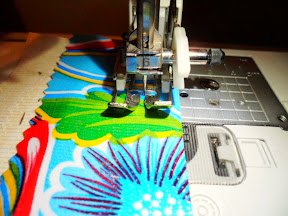

Also I used it to sew together two pieces of oilcloth, and I didn't have to worry about skipped stitches, slipping, or shifting. If you're sewing vinyl; leather; or oilcloth, remember to use a longer stitch than you would use for sewing natural fibers and do not pin.

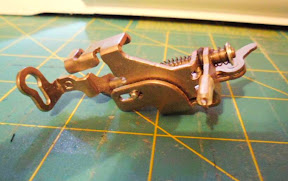
This foot can be used to darn, free-motion quilt, and free-motion embroider.

The feed dogs need to either be covered of lowered on your machine so that your machine won't want to keep feeding your project backwards as you are stitching.
That concludes the session I have today. I will be back soon with another portion of this series soon. Thank you for stopping by! Have a wonderful day!!!

Thanks for this post! I don't know much about different feet, so I appreciate it!
ReplyDeleteThis is great info! Thanks! ♥
ReplyDeleteThis is so helpful as a novice sewer! Thanks!
ReplyDeleteThis was great! I just purchased... all of these kinds for a really great deal and I'm yet to really figure them out -- my goal is to enter the world of free motion quilting.. though yours looks much better than mine! haha
ReplyDelete